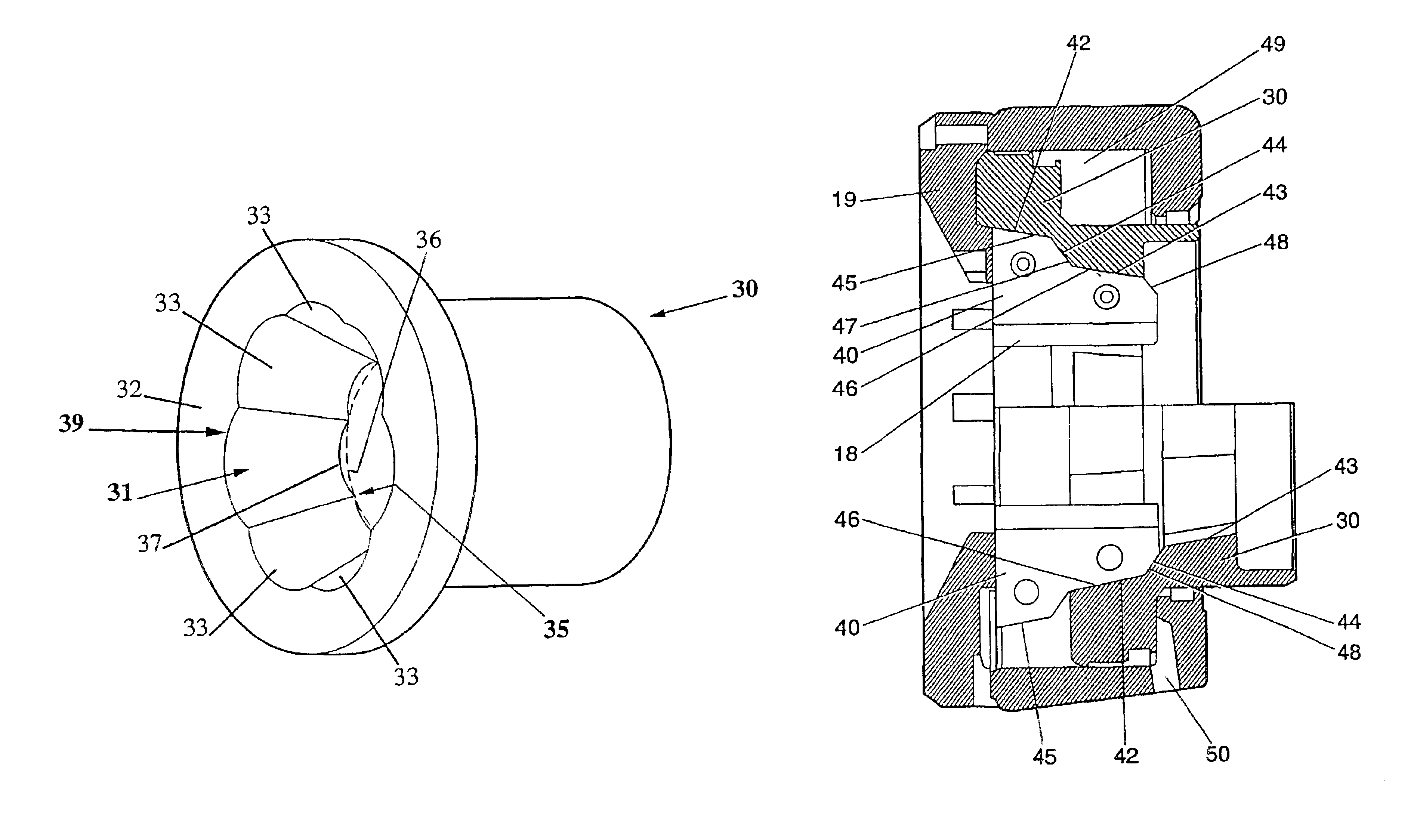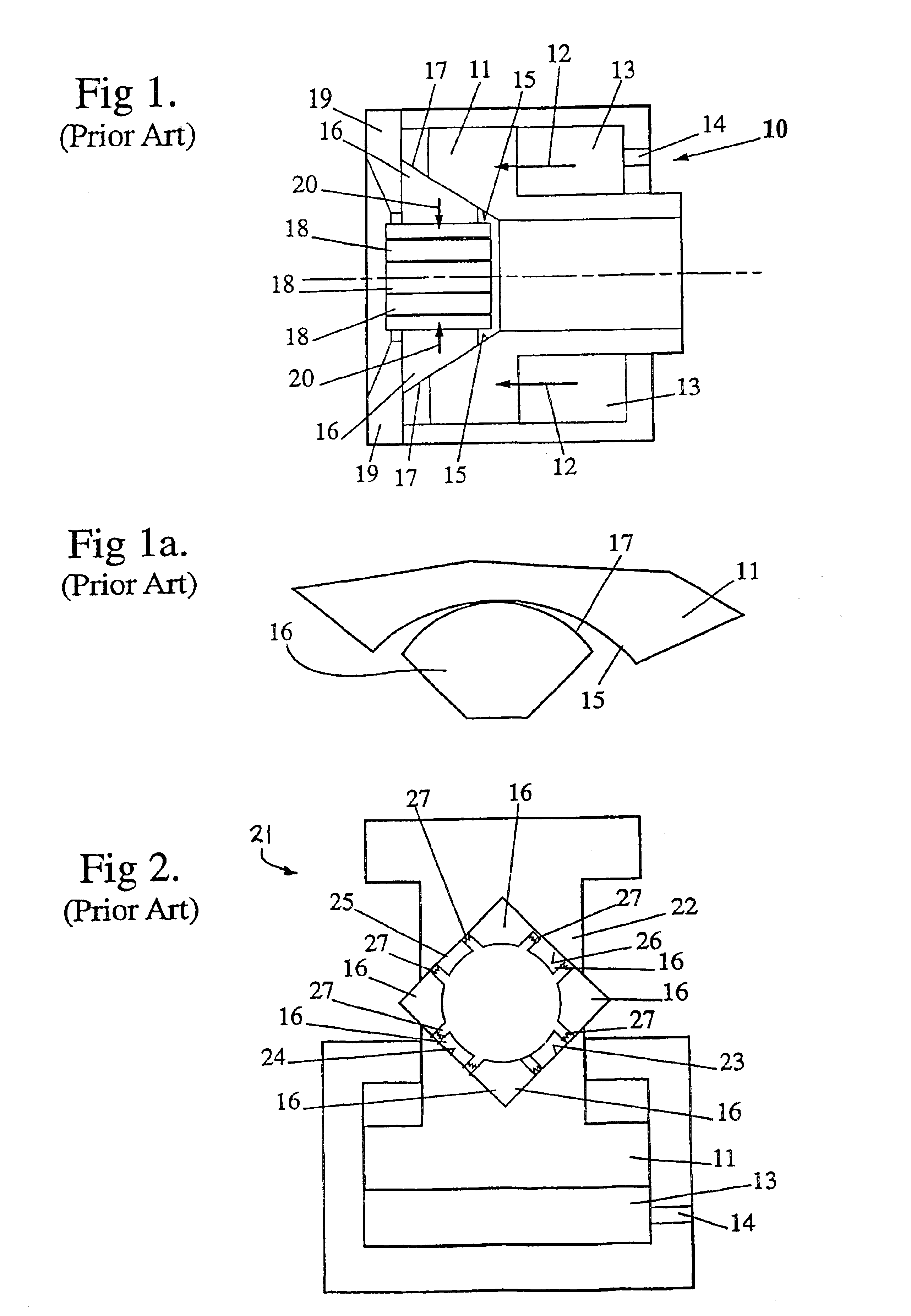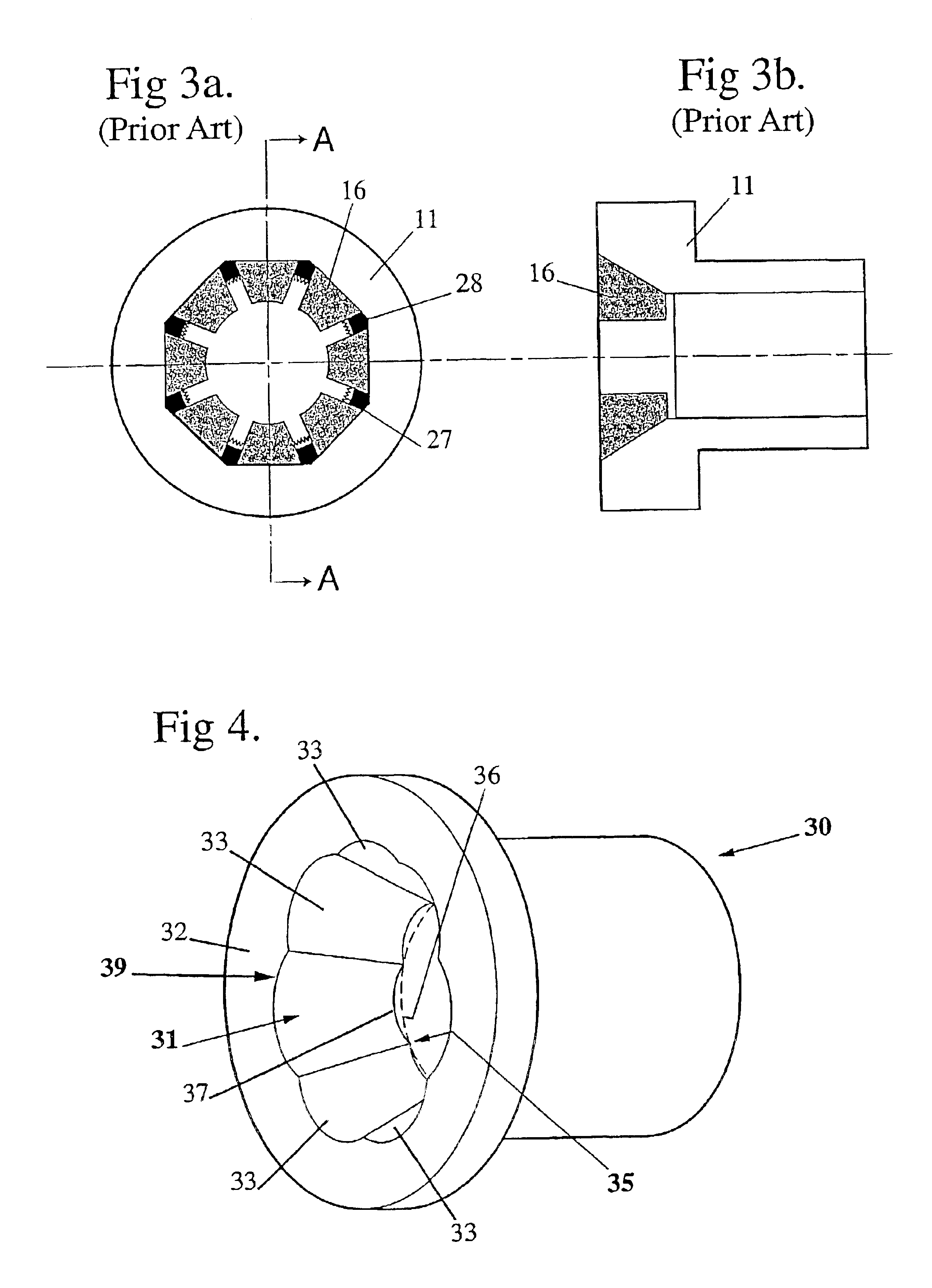Hydraulic swage press
a swage press and hydraulic technology, applied in forging presses, manufacturing tools, forging hammers, etc., can solve problems such as frusto-conical surfaces, “depth” of assembly, and configuration strain
- Summary
- Abstract
- Description
- Claims
- Application Information
AI Technical Summary
Benefits of technology
Problems solved by technology
Method used
Image
Examples
Embodiment Construction
Referring first to FIGS. 1 and 1a, a conventional form of cone type swage press 10 is schematically illustrated employing an operational piston 11 driven in a forward direction 12 by pressurised hydraulic fluid entering chamber 13 via port 14. The forward end face of the piston 11 is recessed to form a frusto-conical surface 15 which co-operably engages with part frusto-conical surfaces 17 on the shoe members 16, each said member 16 carrying a die 18 facing inwardly. The die shoes 16 are restrained against forward movement by an end wall 19 of the press assembly whereby the shoes move inwardly as shown by direction arrows 20 when the piston 11 moves in a forward direction 12. As shown in FIG. 1a, the bearing contact region between the die shoes 16 and the frusto-conical surface 15 of the piston 11 is essentially a line resulting from the method of manufacturing same. As a result a reasonably long bearing area is required resulting in turn in a press assembly that is relatively long ...
PUM
| Property | Measurement | Unit |
|---|---|---|
| diameter | aaaaa | aaaaa |
| axial length | aaaaa | aaaaa |
| radius of curvature | aaaaa | aaaaa |
Abstract
Description
Claims
Application Information
 Login to View More
Login to View More - R&D
- Intellectual Property
- Life Sciences
- Materials
- Tech Scout
- Unparalleled Data Quality
- Higher Quality Content
- 60% Fewer Hallucinations
Browse by: Latest US Patents, China's latest patents, Technical Efficacy Thesaurus, Application Domain, Technology Topic, Popular Technical Reports.
© 2025 PatSnap. All rights reserved.Legal|Privacy policy|Modern Slavery Act Transparency Statement|Sitemap|About US| Contact US: help@patsnap.com



